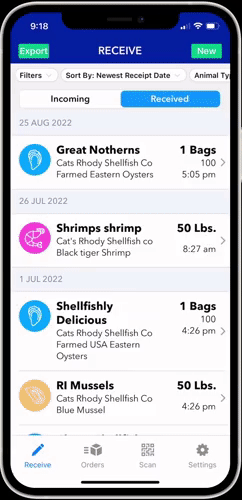Receiving docks are chaotic—and incredibly important. Receiving is a regulated "Critical Tracking Event" in which the buyer is supposed to transcribe the "Key Data Elements" and ensure that the product is what they ordered and that the cold chain has been maintained. Having observed many receiving docks, we understand that the time wasted, the errors introduced, and the money lost can be significant.
There are obvious ways to improve this process, some of which the best companies have implemented. In particular, they get information about a shipment before it arrives and have the product properly labeled with a link to the digital record so receiving involves only scanning—not trying to read someone's handwriting.
Historically, this sort of tool has been available only to the largest companies. But BlueTrace has developed a system accessible to the vast majority of the market.

 confirmed illnesses.
confirmed illnesses.